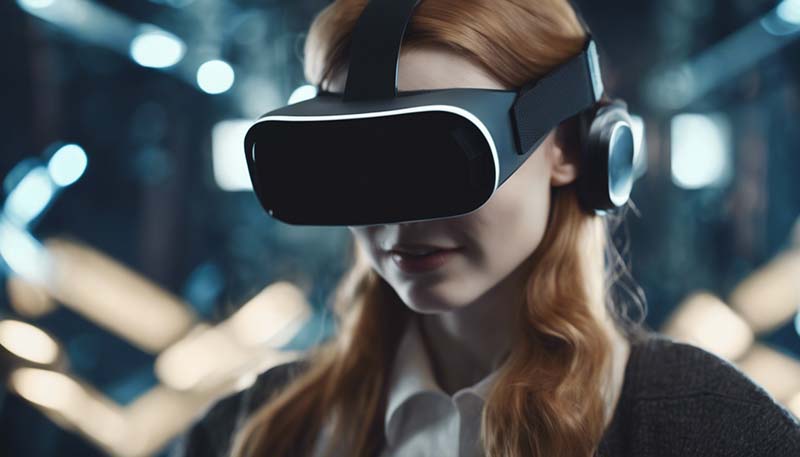The Role of Virtual Reality in Quantum Computing
Quantum computing is a rapidly evolving field that holds the promise of solving complex problems far beyond the capabilities of classical computers. As researchers and engineers work to harness the potential of quantum mechanics for computational purposes, they face new challenges in visualization, simulation, and interaction with quantum systems. Virtual Reality (VR) offers a unique set of tools that can help address these challenges and enhance our understanding and manipulation of quantum states.
Introduction to Quantum Computing
Quantum computing utilizes the principles of quantum mechanics to process information. Unlike classical bits that can be in a state of 0 or 1, quantum bits (qubits) can exist in superposition, representing both 0 and 1 simultaneously. This property, along with entanglement and quantum interference, allows quantum computers to perform certain tasks exponentially faster than classical computers.
Challenges in Quantum Computing
The complexity of quantum systems makes them difficult to visualize and understand. Traditional methods of data representation are insufficient for capturing the multi-dimensional nature of quantum states. Furthermore, the interaction with quantum systems requires precise control over qubits, which is challenging due to their sensitivity to external disturbances.
Virtual Reality as a Solution
VR provides an immersive environment that can simulate quantum systems in a way that is both intuitive and interactive. It can help in:
- Visualization: VR can represent complex quantum phenomena in a three-dimensional space, making it easier to visualize quantum states and transformations.
- Education: By allowing users to interact with quantum systems in a VR environment, learning about quantum computing can become more engaging and accessible.
- Research and Development: VR can serve as a platform for designing and testing quantum algorithms and circuits, providing a sandbox for experimentation without the need for physical quantum hardware.
- Control and Manipulation: VR interfaces can be used to control quantum systems, offering a new level of precision and interaction that may not be possible with traditional methods.
Applications of VR in Quantum Computing
Educational Tools
VR can be used to create educational simulations that allow students to explore quantum computing concepts in a visual and interactive manner. This can help demystify complex quantum phenomena and make quantum computing education more approachable.

Quantum Algorithm Prototyping
Researchers can use VR to prototype quantum algorithms and visualize their execution on a quantum processor. This can aid in understanding the flow of quantum information and the effects of quantum operations.
Quantum Circuit Design
Designing quantum circuits can be facilitated by VR, allowing researchers to manipulate qubits and gates in a spatial environment. This can lead to new insights into the design of quantum circuits and the optimization of quantum operations.
Simulation and Modeling
VR can be used to create accurate simulations of quantum systems, which are essential for testing and verifying quantum theories and models. These simulations can be used to predict the behavior of quantum systems under various conditions.
Quantum Teleportation and Communication
VR can simulate the experience of quantum teleportation, allowing users to understand the process of transferring quantum states between qubits without sending physical particles. This can also be extended to explore concepts in quantum communication.
Technical Considerations
The integration of VR into quantum computing requires addressing several technical challenges:
- Hardware Requirements: High-performance VR systems are necessary to accurately simulate quantum systems.
- Software Development: Developing VR applications for quantum computing requires specialized knowledge in both VR and quantum physics.
- User Experience: Ensuring that the VR interface is intuitive for users with varying levels of expertise is crucial.
- Data Security: Quantum computing poses potential risks to current encryption methods, and VR systems used for quantum computing must be secure.
Future Perspectives
As quantum computing and VR technologies continue to advance, their convergence could lead to new breakthroughs in both fields. The immersive and interactive nature of VR, combined with the computational power of quantum computers, could revolutionize fields such as:
- Medical Research: Simulating molecular structures and chemical reactions at a quantum level.
- Material Science: Designing new materials with specific properties by simulating quantum interactions.
- Climate Modeling: Understanding and predicting complex climate systems using quantum simulations.
Conclusion
The role of VR in quantum computing is an exciting frontier that has the potential to transform how we understand, interact with, and visualize quantum systems. As both technologies mature, we can expect to see increasing collaboration between VR developers and quantum computing researchers, leading to innovative solutions that push the boundaries of what is computationally possible.
Comment